Subscribe now and get our latest blog and video content delivered straight to your inbox.
Everything You Need to Know about L-Mesh Pest Armor

Jan 25, 2024

Nobody wants nuisance wildlife or pests in their home. The pest control industry is estimated to be worth around $25 billion, and for good reason: when a critter invades a home, homeowners want them out of there as quickly as possible.
What’s perhaps even more effective than pest control, however, is pest prevention — stopping bugs and animals before they can even get in.
HY-GUARD EXCLUSION, a HY-C company, makes exclusion screens and guards installed on vulnerable spots on homes across the country to keep critters out. One HY-GUARD EXCLUSION product — Pest Armor — is designed both for animals and insects. It’s perhaps the most versatile Pest Armor product we make.
But what is L-Mesh Pest Armor? How does it work? And where on homes does it get installed?
In this guide, we’ll cover everything you need to know about L-Mesh. We’ll explain what it’s made of, how to use it, the kinds of critters it excludes, and even some caveats to consider.
By the time you’re done here, you’ll understand whether or not L-Mesh Pest Armor is a good fit for your home — or, if you’re a wildlife control operator, the homes you service.
What is L-Mesh Pest Armor?
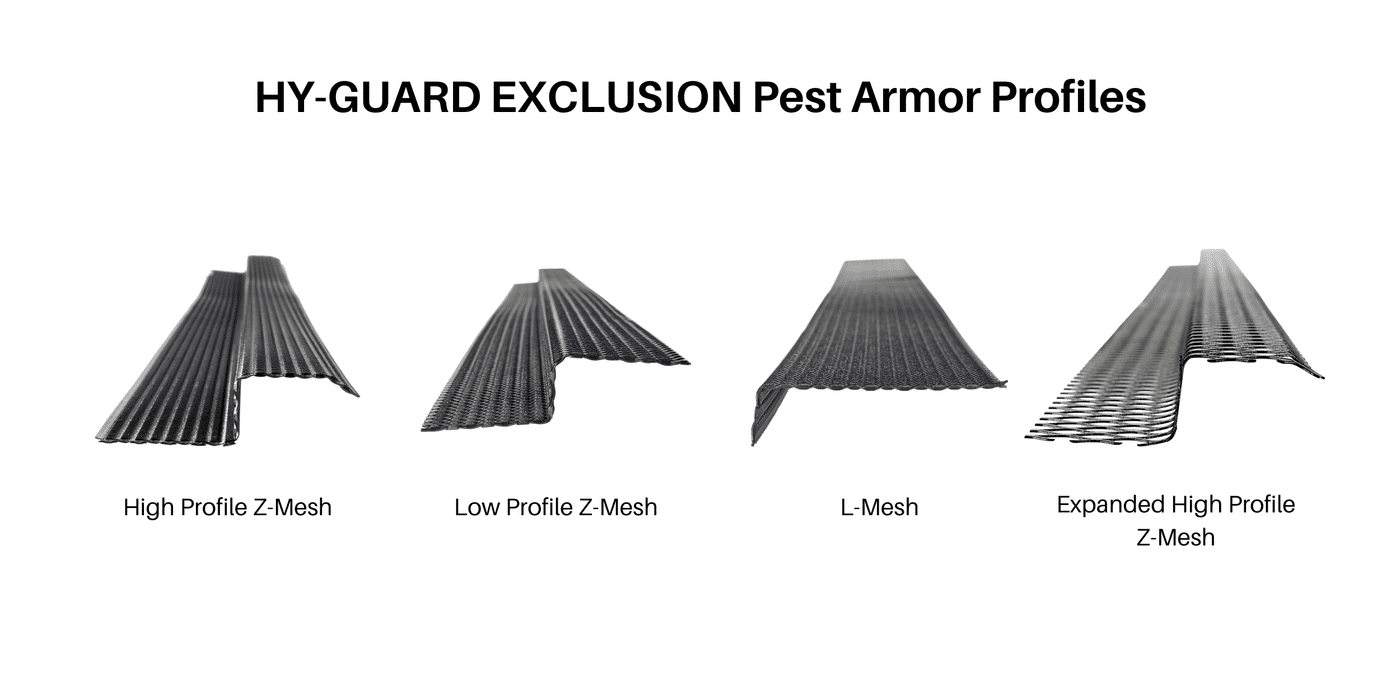
HY-C manufactures HY-GUARD EXCLUSION Pest Armor in four different profiles:
- High Profile Z-Mesh
- Low Profile Z-Mesh
- L-Mesh
- Expanded High-Profile Z-Mesh
Each profile is better-suited to different applications. The L-Mesh is designed to be universal. Its shape is conducive to covering several kinds of gaps on a home, making it a versatile pest exclusion solution.
Material and Sizes
L-Mesh Pest Armor is made of galvanized steel. A black powder coat is added to the finished Pest Armor, providing the steel beneath with some protection against the elements.
The “L” of the L-Mesh measures 1 inch by 3.5 inches, and the entire length of a unit of L-Mesh measures 48 inches (or 4 feet). We sell 40-piece boxes of L-Mesh, offering a total of 160 linear feet of pest coverage on a home.
These boxes contain all the applicable hex head screws and washers required to attach the L-Mesh to its installation location.
What Kind of Critters Does L-Mesh Exclude?

Our HY-GUARD EXCLUSION products are designed to keep out two different groups of critters from homes: animals and insects.
Some products in the line are best-suited only to exclude animals, while other products can exclude both groups of critters. L-Mesh is in the latter group, capable of excluding both wildlife and pests.
It features ¼” metal mesh in the body of its design. This mesh is open enough to allow proper drainage and ventilation, but small enough to exclude everything from large, stinging insects to small mammals. Some of the most common animals L-Mesh excludes are:
- Raccoons
- Squirrels
- Mice
- Rats
- Bats
- Birds
- Snakes
And some of the most common insects it excludes are:
- Wasps
- Bees
- Hornets
- Stink bugs
- Spiders
- Yellow jackets
Where on a Home is L-Mesh Used?
L-Mesh is a versatile, universal pest exclusion solution, and wildlife control operators have been very creative about how and where they install it. But there are two primary spots where L-Mesh is most commonly installed on homes: rainscreen siding gaps and solar panels.
Rainscreen Siding
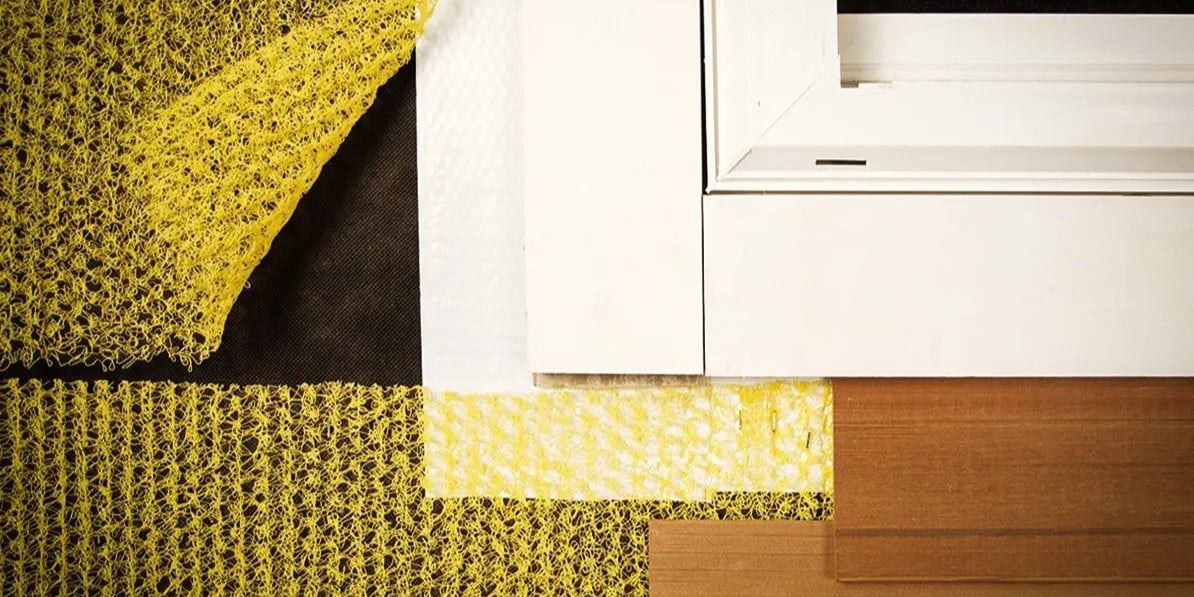
Rainscreen is a kind of open, woven polymer material that comes in sheets and is installed during the home building process. It’s applied between the interior wood of a wall and the siding to allow rain and other moisture to drain out over time.
The problem with a rainscreen siding system is that it leaves a gap for critters — especially birds and insects — to get in and make a home. L-Mesh is installed over the gap of the rainscreen siding, locking critters out while still allowing for proper drainage and ventilation.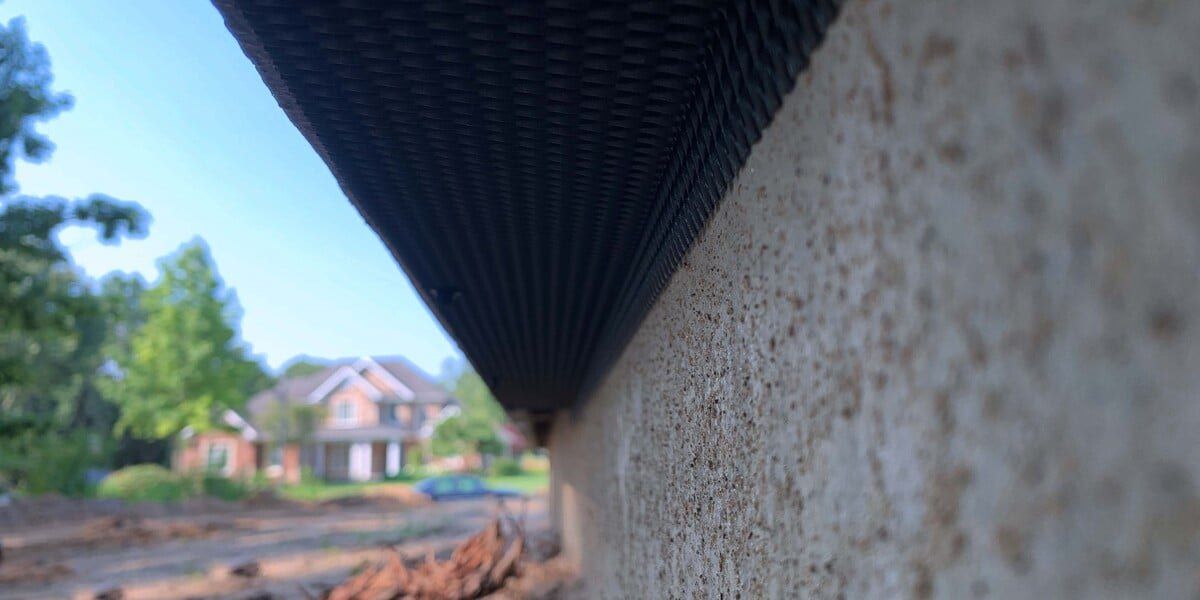
Solar Panels
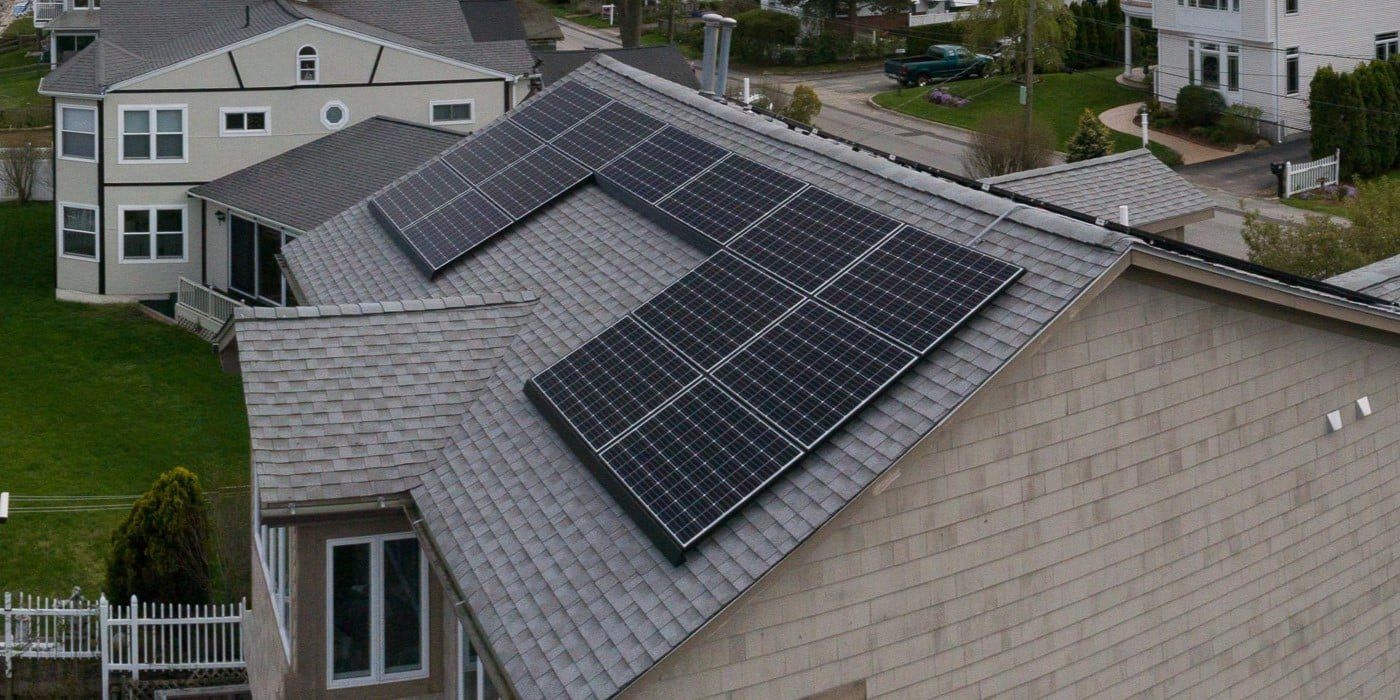
Solar panel installations on residential buildings have been increasing rapidly over the past few decades. According to the Solar Energy Industries Association, in 2013, there were about 2,300 solar panel installations on homes in the U.S. In 2023 — just 10 years later — there were nearly 35,000.
Solar panels are a great source of natural, renewable energy, but they come with a problem: there’s typically a 4” to 8” gap between the panels and the roof. Critters can burrow in these gaps for protection from the elements, and while they’re there, they can wreak havoc, chewing through the electrical components that allow the panels to work.
L-Mesh’s L-shaped design is conducive to covering these gaps and keeping animals from ruining solar panels. The 1” flange attaches to the roof, while the 3.5” edge sits flush against the solar panels, blocking out both animals and large insects.
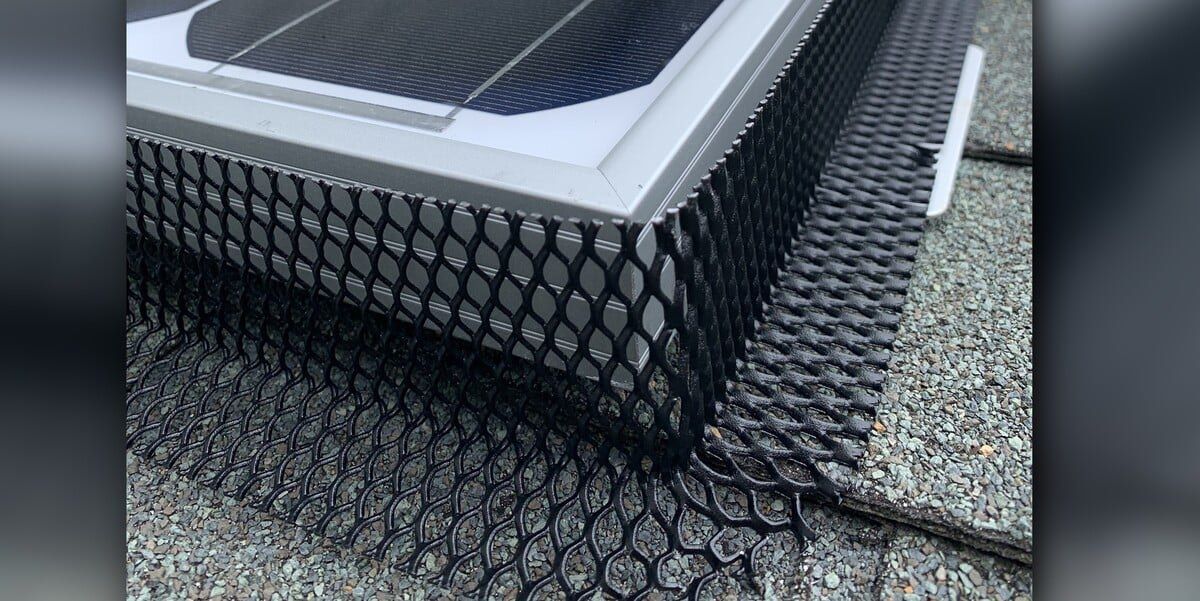
With solar panel installations increasing every year, L-Mesh presents wildlife control operators the opportunity to offer a fast-growing, much-needed exclusion solution to their customers.
Two L-Mesh Pest Armor Caveats
No product is a perfect, catch-all solution, and L-Mesh is no exception. Before you decide to install some on your home or offer it to your customers, there are two important caveats that you should be aware of.
L-Mesh Should Not be Used within 25 Miles of a Saltwater Coast
As we mentioned, L-Mesh is made of galvanized steel. This type of steel is cost-effective, but it doesn’t stand up well against saltwater. The chemical makeup of saltwater causes galvanized steel to rust, so if you operate near the ocean or a saltwater lake, L-Mesh may not be your best choice.
We have worked on developing a new, stainless steel version of Pest Armor, but at the moment, it’s only available in the High Profile Z-Mesh style. If enough customers or wildlife control operators express interest in stainless steel L-Mesh, we can explore filling that need. Just understand that it will be much more expensive than the galvanized steel style.
L-Mesh May Not be Long Enough for Some Solar Panel Installations
We’ve found that L-Mesh has been a great solution to keep critters from meddling with solar panels. Our research, however, has shown that solar panels can be anywhere from 2” to 8” high off of a roof.
L-Mesh Pest Armor can only offer 3.5” of coverage at the most for a solar panel. Any panels higher off of a roof than that aren’t a good fit for L-Mesh. We’re looking at producing L-Mesh in longer lengths to accommodate more solar panel setups, but nothing is available yet at the time of writing.
Do You Need L-Mesh Pest Armor?
Wildlife exclusion is an art and a science. In order to utilize and install wildlife exclusion devices correctly, you have to understand the habits and traits of the critters in your area and know which exclusion tool works best to keep them out.
With that in mind, you may be wondering: is L-Mesh right for you?
If your home (or the homes you service as a wildlife control operator) feature a rainscreen siding gap or solar panels on the roof, L-Mesh is a great solution to exclude critters. Its solid steel construction and tight, ¼” mesh is good for excluding animals and insects alike.
A small investment in L-Mesh upfront can save you or your client from expensive repair bills down the road, keeping your home pest-protected and damage-free.
If you’re interested in installing L-Mesh on your home, reach out to a wildlife control operator in your area. If you’re a wildlife control operator yourself, a HY-C account manager can help you discover how you can add L-Mesh to your wildlife exclusion repertoire today.

